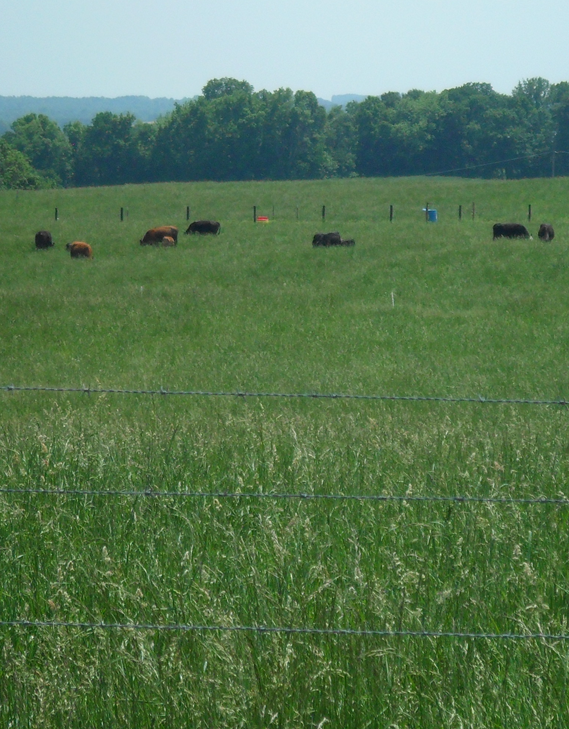Farm Highlight: Landis Farm
 The Landis Farm, owned and operated by Jim and Baker Landis, is a 120-acre farm which raises beef cattle with a pasture based system. The Landises use a rotational grazing method, which Jim explains has allowed him to increase livestock numbers while providing better quality forage. Jim and Baker mainly graze fescue and orchardgrass under seeded with clover. When the season will allow, Jim drills in cereal rye in the fall for early spring grazing. Stockpiled fescue is also utilized in paddocks for late fall and winter grazing.
The Landis Farm, owned and operated by Jim and Baker Landis, is a 120-acre farm which raises beef cattle with a pasture based system. The Landises use a rotational grazing method, which Jim explains has allowed him to increase livestock numbers while providing better quality forage. Jim and Baker mainly graze fescue and orchardgrass under seeded with clover. When the season will allow, Jim drills in cereal rye in the fall for early spring grazing. Stockpiled fescue is also utilized in paddocks for late fall and winter grazing.
Jim and Baker started their conversion from continuous grazing to a rotational grazing system in 2006 and have continued to improve their practices each year. When the farm they had been leasing for grazing land was sold, Jim and Baker were looking to extend their grazing area by some other means when they were recruited by the Barren County extension agent, Gary Tilghman, and grazing coordinator, Keenan Turner. They began with a layout using temporary fencing and a few strategically placed waterers as budget allowed. As time passed and allowed them to evaluate their current system, they began replacing some temporary fencing with permanent, high-tensile fencing. Lanes were put in for easy animal movement. The farm now rotates cattle through 23 to 26 paddocks.
According to Jim, “Of utmost importance is availability of cool water to all paddocks and then ease of moving animals through the property to points of handling or loading.”
Providing water in every pasture can be a difficult task when starting a rotational grazing system. The Landises started with a few strategically placed waterers and as time, budget, and resources allowed, they continued to improve the water system. Limited stream access was used wherever possible. Fencing out streams and ponds to only allow limited access to livestock reduced detrimental effects and furthered conservation goals. City water was utilized in several paddocks and flow lines from the pond into tanks equipped with flow valves were developed to provide water in remaining paddocks. Where applicable, water stations were placed where they could be accessed in multiple paddocks.
Since utilizing a rotational grazing method, Jim has experienced many benefits with an end effect of increased profitability. First, he claims to have the ability to increase utilization of available forage, which has allowed for increased stocking rates. He explains that the repeated moving of animals allows them to be more vigilant of health care concerns and conception issues within the herd. The forages he grazes are of better quality, and animal gains have increased. Little stored feed is fed throughout the winter, and animal performance remains high. Jim claims that utilizing a rotational grazing system has greatly benefited the Landis Farm.
Categories:
General
Farm Highlights


